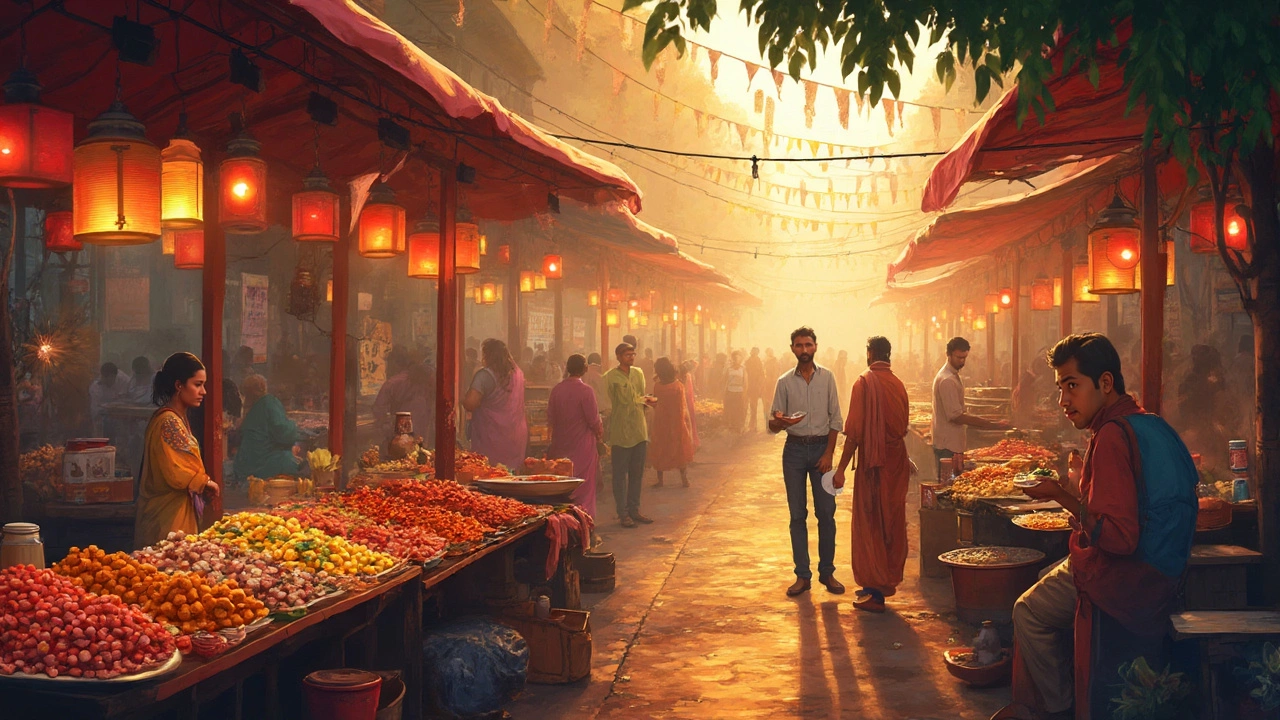Indian Food Prices: What You’ll Really Pay for Meals Across India
When you think of Indian food prices, the cost of meals in India ranging from roadside stalls to upscale restaurants, it’s easy to assume everything’s cheap. But that’s not the whole story. Indian food prices vary wildly depending on where you are, what you’re eating, and who’s serving it. A plate of pani puri in Delhi might cost you 15 rupees, while the same snack in a tourist-heavy part of Goa could hit 50. It’s not just about hunger—it’s about context.
Let’s talk about street food cost India, the affordable, flavorful meals sold by vendors across cities and towns. This is where most travelers eat—and where the real value lives. In Mumbai, a full meal of vada pav, chai, and a small samosa won’t top 80 rupees. In smaller towns like Nagpur or Bhopal, you can eat well for under 60. But in high-end areas of Bangalore or Hyderabad, even a simple dosa might cost 150 rupees if it’s served with fancy chutneys and in a branded stall. The key? Watch where locals line up. That’s your best hint for fair pricing.
Then there’s meal prices India, the cost of sit-down dining at restaurants, hotels, and cafes. A basic thali in a local eatery? Around 120–180 rupees. At a mid-range restaurant in Jaipur or Kochi? You’re looking at 300–500 rupees. For a fancy dinner in Delhi or Mumbai with cocktails and dessert? Easily 1,500 rupees or more. And don’t forget drinks: bottled water costs 20 rupees everywhere, but a beer at a beachside bar in Goa? That’s 300–400. The difference isn’t just food—it’s location, atmosphere, and who’s paying for the view.
Travelers often ask: "Is it worth paying more?" Sometimes yes. A homestay in Kerala might charge 250 rupees for a home-cooked meal with fresh fish and coconut rice—and it’s unforgettable. But in crowded tourist zones, you’re often paying for the sign, not the spice. Budget travelers stick to markets, railway station food courts, and family-run dhabas. That’s where you’ll find the best budget travel India, low-cost, authentic eating experiences that don’t compromise on flavor. And yes, you can eat like a local for under 300 rupees a day, even in big cities—if you know where to look.
What you won’t find in guidebooks is how prices shift with seasons. During monsoon, street vendors vanish in coastal areas, and prices creep up. In peak tourist months like October and December, even simple meals in Jaipur or Udaipur jump 20–30%. The smart traveler eats early, avoids hotel buffets, and carries snacks. A packet of roasted chana or a banana costs less than 10 rupees and keeps you going between meals.
And then there’s the hidden cost: food safety. You might save money on a cheap kebab, but a bad stomach can cost you days of travel—and a hospital bill. That’s why the best guides don’t just list prices—they tell you where to eat safely. The same vendor who sells you 20-rupee samosas in the morning might be the one serving you 100-rupee biryani at night. Trust consistency, not just cost.
Below, you’ll find real stories from travelers who learned the hard way—and the easy way—how to eat well in India without overspending. Whether you’re planning a week in Rajasthan or a month across South India, these posts give you the exact numbers, locations, and tips you need to eat like a local, not a tourist.
